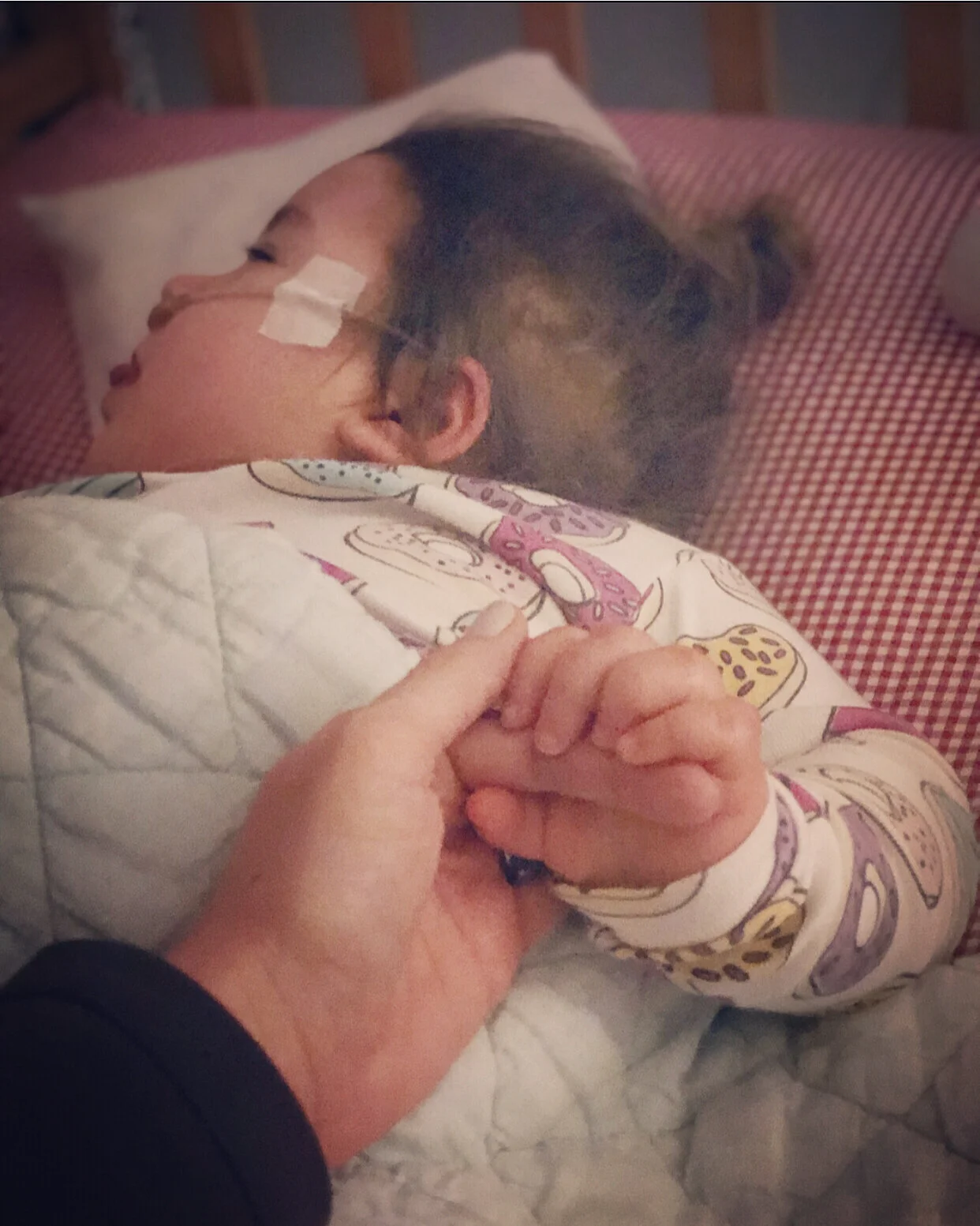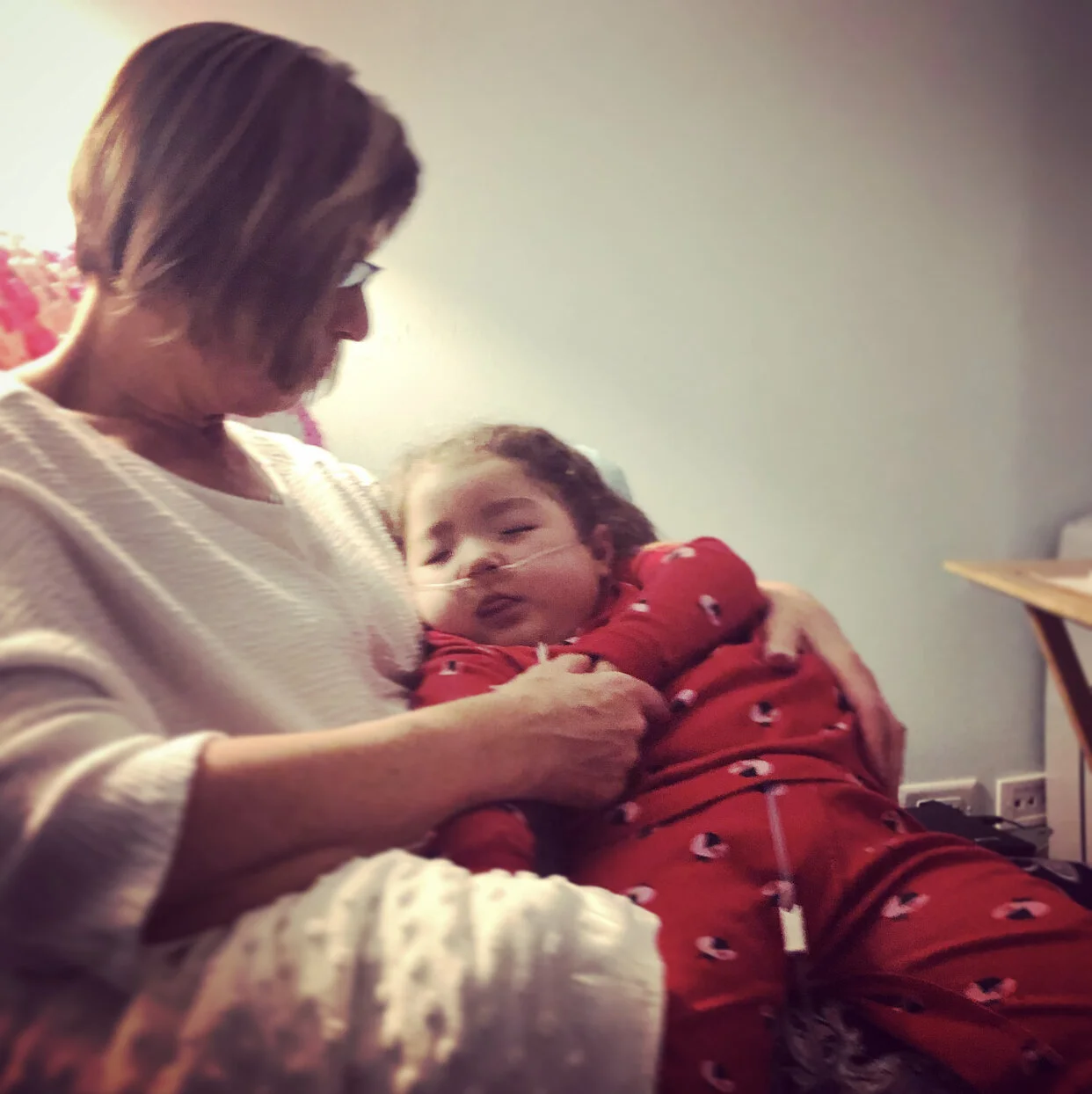Fly me to the moon
One of Adelaide’s many gifts to us, were the people she brought into our lives. Not least of which was Nurse A. Yes, she was Adelaide’s caregiver and nurse, but she became so much more than that over the years. We love her like family and I desperately miss welcoming her into our home four days a week. There are so few people who truly got to know Adelaide intimately that I value those people in my life more than ever now that I am yearning to keep her memory alive beyond the squares on my instagram page. So, I reached out to Nurse A and asked her to write a post for me about her unique perspective on Adelaide and, specifically, how they communicated. I wanted this recorded for my own memory but also to remind people that verbal communication is not the pinnacle of expression or understanding one another. Of course it would have been easier if Adelaide could have used words to explain what she was feeling, experiencing or desired. Of course I dreamed of hearing her say, “mama” or “I love you”. But when you truly know someone, when you take the time to watch and listen, words cease to be necessary. But I’ll let Nurse A explain…
Kelly reached out to me asking if I would share my experiences with Adelaide and how she communicated with me. I am a registered nurse and had the enormous pleasure of being one of Adelaide’s caregivers. Adelaide and I spent quite a bit of time together over the last couple years, so it is safe to say I knew the beautiful little girl quite well. Interestingly, Kelly and I were recently having a conversation about how even though Adelaide was non-verbal, unable to smile, and had quite often little to no control over her bodies physical reactions due to her rare disorders- she sure had quite a bold personality that will never be forgotten.
Adelaide could not verbally communicate to me her wants, needs, and moods, but, boy, she had no problem expressing it in other ways! Further complicating matters was Adelaide’s epilepsy, which put her at high risk for sensory overload. This resulted in Adelaide’s urge to close her eyes and “hide”- the “I can’t see you, you can’t see me…” type of mood, or what Kelly often referred to as “possum mode”. I’ll never forget the day I was showing another caregiver Adelaide’s routine and observed Adelaide track the caregiver all throughout her room as long as the caregivers back was turned to her. But as soon as the caregiver looked directly at Adelaide she would shut her eyes closed. In that moment I learned that Adelaide was one smart and sneaky girl who may or may not have been using this same technique on me. This let me know that she was ALWAYS absorbing, listening, and taking in. So, what better activity than reading books together, right?!
Reading books to Adelaide was a consistent activity she was receptive to. While reading books I often caught her peaking at the pictures. She very rarely fussed once we started and quite often fell asleep by the second book which hinted to it being a calming activity for her. Other favorite activities included being sung to by Jackson, mommy & daddy as well as repetitive light touch. Adelaide’s reactions were sometimes stunning but often consistent. Her muscle tone would calm, heart rate would lower and any fussing typically resolved. There would even be some beautiful moments when she would open her eyes, big and bright. Due to Adelaide’s seizures, she experienced drastic instability in her vital signs resulting in continuous pulse oximeter monitoring. But this proved to be a helpful tool in determining her mood if we were in doubt. For example her heart and and respiratory rate would rise when angry/frustrated and lower when calm/relaxed.
One of my first days with Adelaide I was surfing through music to play for her, attempting to get a sense of what she liked and disliked by listening to her and watching her physical reactions. Naturally, I turned on Baby Einstein and waited to see if there were any of the nursery rhymes that would spark some sort of reaction. Nothing. Nada. She was not budging from “possum mode”. But she wasn’t crying or fussing either- her muscle tone & limbs remained relaxed -queuing to me that she didn’t haaate the music completely. So, I continued on my search. When ‘Baby Shark’ came on, oh, did I get a reaction: a giant squeal followed by fussing, leg kicks, and a surprising elevation in heart rate. She let it be known that theses nursery rhymes were a bit too upbeat for her liking. Noted. Time to switch genres. From Baby Einstein we switched over to something more down-tempo: jazz. The fussing and leg kicking stopped, possum mood returned. Adelaide sat calmly and quietly, queuing me: ok, she’s absolutely listening, and jazz seems not to make her mad like Baby Shark. So, I keep the music playing. A few songs pass then Frank Sinatra came on, “Fly Me to the Moon”. Her eyes opened wide and bright, zero fussing, relaxed tone. She was actively looking around the room and even at me. Ah hah! Our music experiments also told me that she was a fan of acoustic music, (not a huge surprise seeing how she had a Rockstar dad and frequent personal concerts).
More often than not the communication was more subtle: when someone special to her would visit she would greet them by opening her eyes & tracking them and would say goodbye in a similar manner at their departure. Hand holds, finger squeezes, and accepting a cuddle were other ways Adelaide expressed her love and gratitude. Miss A had no problem letting someone know whether or not she wanted to cuddle. If game she’d present calm and quiet with a very relaxed muscle tone & quite often nestled her hand up to the chest. But if she wasn’t in the mood… legs kicking, arms flailing, and a consistent fuss until she was put back in her bed or chair.
It is my hope that by sharing some of my favorite experiences with Miss Adelaide and her sweet, strong, and sassy personality, that I can help others understand the significance and power of understanding and getting comfortable with nonverbal communication. We can understand so much about people when we simply stop to observe and listen.




